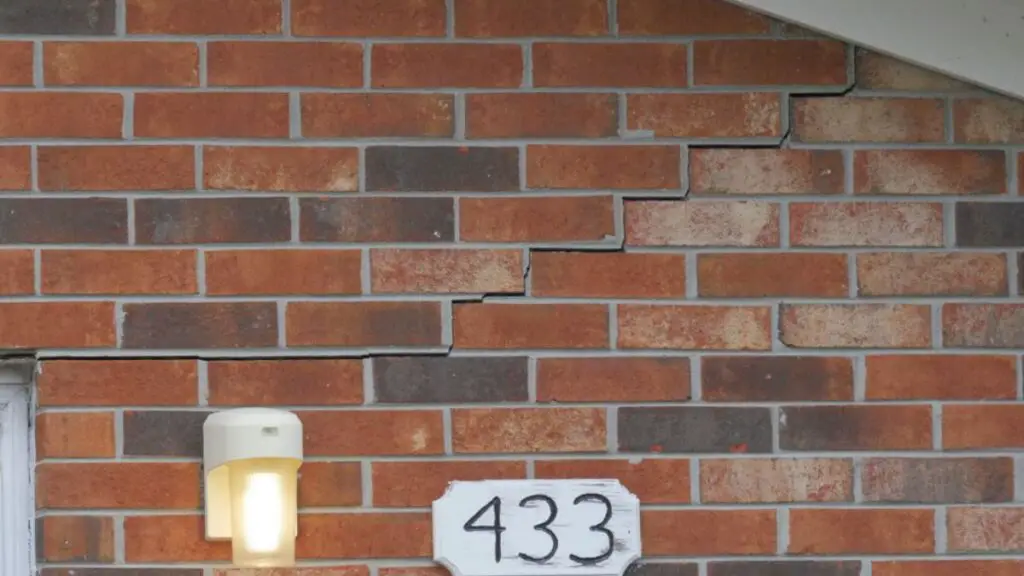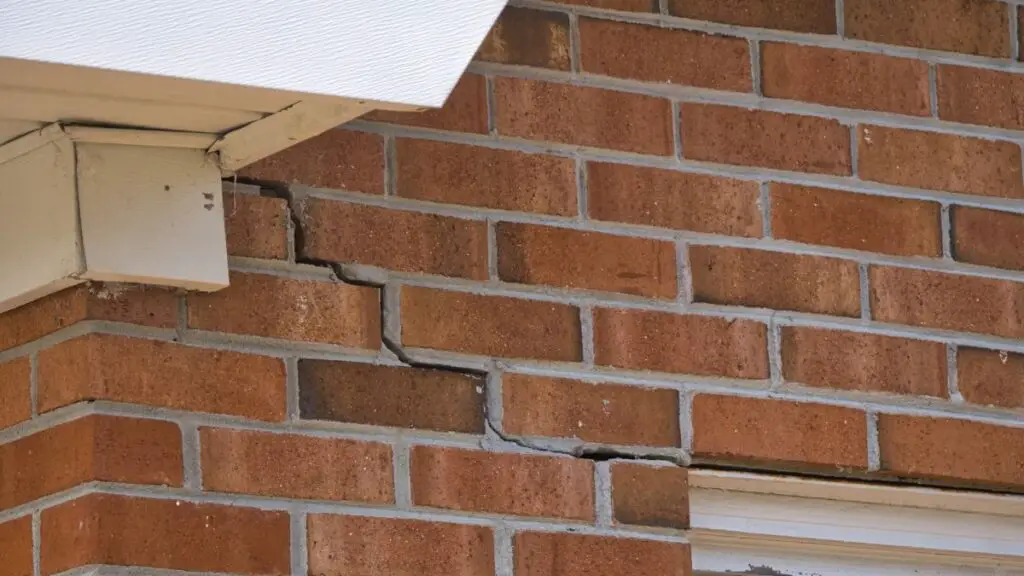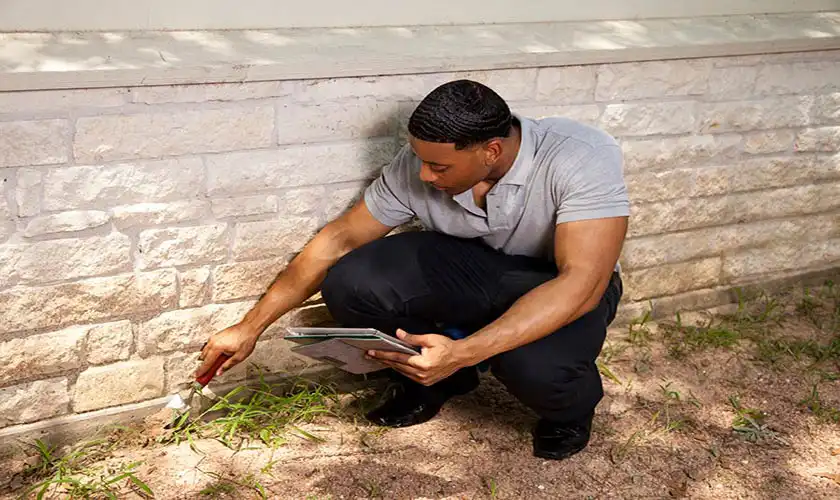A strong and proper foundation is essential for any building or structure. It is the base upon which the entire edifice rests, and without it, the building cannot withstand external forces such as wind, water, or earthquakes. A strong foundation ensures a building is stable and maintains its structural integrity over time.
Foundation problems and settling are distinct issues affecting your home’s structural integrity. Foundation problems, often due to poor construction, soil erosion, or water damage, can lead to serious structural damage, while settling is a natural process of soil compression over time.
Moreover, a sturdy foundation can prevent several major types of foundation issues like stair-step cracks, uneven floors, and jammed windows or doors. Therefore, it’s vital to maintain your home’s foundation to prevent costly repair of damage in the future. Continue reading to learn more about foundation problems vs settling.
Get FREE quotes from local foundation repair contractors in your area today. Whether you need a pier replaced, basement waterproofing, or a full foundation replacement - We Can Help! All Contractors are screened, licensed, and insured.
| Key Takeaway |
|---|
| Foundation problems and settling are two distinct issues |
| Foundation problems can lead to serious structural damage |
| Settling is a natural process that occurs within the first seven years after a house is built |
| Common causes of foundation problems include soil erosion and poor construction |
| Signs of foundation problems include cracks in walls/floors, uneven floors, and stuck windows/ doors |
| Settling can cause cosmetic damage such as drywall cracks or sloping floors |
| Misidentifying foundation problems can lead to unnecessary expenses |
| Settling can cause cosmetic damage, such as drywall cracks or sloping floors |
| Solutions for common foundation problems include underpinning, piering, or complete replacement |
| Solutions for settling may include mudjacking or installation of steel/helical piers |

Brief Overview of Foundation Problems and Settling
Foundation problems are common issues that arise due to the following:
- Poor construction practices
- Water damage from floods or leaky pipes
- Heavy rains in the rainy season cause soil erosion
- Improper grading
- Seismic activity
- Tree roots growing too close to foundations.
A faulty foundation can cause various foundation issues if not treated on time. Some of these issues include:
- Cracks in walls/floors/ceilings
- Sinking floors
- Sagging roofs
On the other hand, natural settling occurs when a building gradually sinks into its surroundings and is entirely natural over a period of time. Common causes include:
- Soil compaction beneath homes causes small cracks throughout your entire house, like around doors/window frames.
- Settling can also happen due to natural ground movement from a geological activity like earthquakes.
- Natural settling can become a foundation issue if conditions persist over a long time.
Understanding The Differences Between Foundation Problems vs Settling
While many people may confuse settling with foundation problems because of their similar symptoms sometimes – sloping floors/walls; they are two distinct issues that require different solutions.
It’s important to differentiate between these two issues because ignoring them could lead to expensive repairs down the line that could have been easily prevented if caught early on.
Understanding the difference between normal foundation problems and settling is crucial for homeowners who want to keep their homes in good condition. Knowing the causes, symptoms, and solutions of each issue can help you make informed decisions about maintaining your home’s foundation and preventing costly damage in the future.
Foundation Problems
A foundation problem is any issue that affects the structural integrity of a building’s foundation. This can occur when a building’s foundation is not properly designed or constructed or when it is exposed to environmental factors that cause it to weaken over time.
Causes of Foundation Problems:
Foundation problems can arise due to various factors. It is important to understand the common causes to identify and address them effectively. Here are some key causes:
Soil Erosion
- Soil erosion occurs when the composition of the soil around the building shifts or moves away from the foundation.
- This movement weakens the foundation over time, leading to potential structural issues.
Poor Construction Practices or Materials
- Inadequate construction practices or substandard materials can contribute to foundation problems.
- For example, if lower-quality concrete is used instead of the required quality, it can compromise the strength and stability of the foundation.
Water Damage
- Water damage can significantly impact the foundation.
- The soil around the base of the building may expand and contract due to water exposure, causing stress on the foundation.
- Plumbing leaks or underground water sources can penetrate concrete foundations, compromising their strength.
Signs of Foundation Problems
Detecting early warning signs of foundation problems is crucial for timely intervention. Here are common indicators to watch out for:
Cracks in Walls or Floors
Cracks appearing on walls or floors can clearly indicate foundation issues. Different types of cracks may indicate specific problems, including:
- Vertical cracks: Often caused by settling or shifting of the foundation.
- Diagonal cracks: Suggests differential settlement or lateral movement.
- Stair-step cracks: Common in masonry or brick walls, indicating foundation movement.
- Horizontal cracks: May indicate hydrostatic pressure or lateral soil movement.
Uneven Floors
- Uneven or sloping floors can indicate an underlying problem with the foundation.
- The unevenness may result from damage to the support system, causing an imbalance in the structure.
Sticking Doors and Windows
- Difficulty in opening or closing doors and windows can be a sign of foundation issues.
- When the foundation shifts or settles, it can affect the alignment of doors and windows, causing them to stick or become misaligned.
Dangers of Untreated Foundation Problems:
Ignoring foundation problems can lead to severe consequences. Here are the potential risks associated with untreated issues:
Structural Damage
- Minor cracks can worsen over time and lead to significant structural damage.
- Increasing gaps between walls or significant shifts in the foundation can compromise the stability of the building.
Risk to Lives
- Neglected foundation problems can pose a danger to the occupants of the building.
- In extreme cases, a weakened foundation may result in a partial or complete building collapse, endangering lives.
Property Value Reduction
- A damaged foundation can significantly decrease the value of a property.
- Prospective buyers are often wary of purchasing properties with untreated foundation issues, making it difficult to sell at a desirable price.
A building’s foundation is integral to its structural integrity and must be monitored closely for potential issues. Property owners should know the signs of foundation problems and take necessary precautions when they arise.
What House Settling Looks Like
Settling is the natural process by which the ground beneath a building compresses and shifts over time. This can lead to changes in the elevation of the foundation, causing cracks in walls, floors, and other structural components.
Most settlement occurs within the first seven years. House settling is normal and expected, but excessive settling can signify a more serious problem with the foundation or soil beneath it.
Causes of Settling
Several factors can contribute to settling. One common cause is soil compaction, which occurs when the weight of a building compresses the soil beneath it. Other causes include natural ground movement due to geological processes such as earthquakes or subsidence, as well as changes in the moisture content of the soil due to fluctuations in extreme weather conditions.
Signs of Settling
The most obvious sign that settling may occur is cracks in drywall or stucco on interior or exterior walls. Another common indication is sloping floors or walls, where one side appears lower than another. In extreme cases, settling can cause doors and windows to become misaligned and difficult to open or close properly.
The Dangers of Untreated Settling
While some settling may be unavoidable, untreated excessive settling can lead to serious structural damage over time. Cracks in walls and floors can widen over time, leading to potential safety hazards for those who live or work inside the building.
Sloping floors and walls are unsightly and compromise a building’s stability and overall value. Left unchecked for too long, excessive settling could lead to the total collapse of a structure – making it vital for property owners to take action as soon as they notice signs of this problem.

Difference Between Foundation Problems and Settling
Foundation problems and settling are often used interchangeably, but they are different. While both can cause structural damage, they have different causes and symptoms. Foundation problems occur when the foundation of a building is compromised due to soil erosion, poor construction, or water damage.
Settling is a natural process that occurs as soil over time beneath a building compresses. One way to distinguish between foundation problems and settling is by looking at the severity of the damage.
Foundation problems are more serious than settling because they can lead to physical structures or complete foundation failure if left untreated. Signs of foundation problems include diagonal or horizontal cracks in foundation walls or floors, uneven floors, doors or windows that don’t close properly, or gaps between walls and ceilings.
Settling, conversely, usually results in cosmetic damage, such as vertical hairline cracks in drywall or stucco and sloping floors or walls. While these issues may be unsightly, they do not pose an immediate threat to the structure’s stability.
Why it’s Important to Correctly Identify Whether a Building is Experiencing a Foundation Problem or Just Normal Settling
It’s crucial to correctly identify whether a building is experiencing foundation problems versus just normal settling because it determines what type of repairs are needed. If settling occurs naturally due to soil compaction or ground movement over time, then it doesn’t necessarily mean that there is a building structure issue with your building’s foundation.
However, signs of significant structural damage, such as cracks in the foundation itself or uneven floors that continue to worsen over time despite attempts at repair work, could indicate an underlying foundational problem that needs immediate attention.
Misidentifying these issues can lead to unnecessary expenses on repairs for something like normal settling when the real issue is a serious foundation problem. Likewise, ignoring signs of structural damage can lead to dangerous situations in the future that put occupants of the building at risk.
Taking Action
If you suspect that your building may be experiencing foundation problems or settling, it’s important to have a professional inspect the structure to identify the damage’s cause accurately.
This will help determine whether your home’s structure is safe and sound or if it needs repairs. Based on their analysis, they can then recommend potential solutions for fixing any identified issues.
Some possible solutions may include installing steel piers or concrete underpinnings to stabilize and level out the foundation, repairing drainage issues around your property to prevent water from accumulating around your foundation, or even replacing parts of your foundation itself.
Regardless of what steps need to be taken to address any underlying foundational problems or settlement issues, taking prompt action will ultimately save you money, keep your building safe for future use, and save you from the ongoing settlement.
Solutions for Foundation Problems vs Settling
Foundation Problem Solutions
Foundation problems require immediate attention, and solutions vary depending on the severity of the issue. Minor cracks can be fixed with epoxy injections, while other problems may require more extensive repair methods, such as underpinning or piering.
Underpinning involves adding new structural support to the foundation, while piering involves driving steel pipes deep into the ground to stabilize and level the foundation. In some cases, complete foundation replacement may be necessary.
It’s important to note that attempting DIY foundation repairs is not recommended. These repairs are complex and require specialized skills and equipment, so it’s best to leave them to a professional contractor with experience in dealing with them.
Settling Solutions
Unlike foundation problems, settling is a natural occurrence that can often be left alone without any intervention. However, solutions are available if settling is causing significant structural element damage or safety considerable concerns.
One solution for settling is mudjacking (also known as slab jacking), which involves pumping a cement mixture under settled concrete slabs to raise them back up to their original position.
Another option is installing steel or helical piers, stabilizing the building’s foundation and preventing further settling. As with foundation problem solutions, it’s best to consult a professional contractor with experience settling issues before attempting any repairs.
FAQs About Foundation Movement vs Natural Settling
How do you tell the difference between foundation problems and settling?
Foundation problems arise from issues such as soil erosion, poor construction, or water damage, which compromise the stability of a building’s foundation. Settling is a natural process that gradually occurs as the soil beneath a building compresses.
Is settling a foundation issue?
Settling itself is not considered a foundation issue, as it is a natural process of soil compression over time.
How can you tell if you have foundation problems?
Signs of foundation problems include cracks in walls or floors, doors and windows becoming misaligned or sticking, sloping or uneven floors, and gaps between walls and windows or doors.
Conclusion
While foundation problems and settling may seem similar at first glance, they are two distinct issues that require different solutions. It’s important for property owners to understand the signs of each problem so they can take appropriate action when necessary.
Don’t ignore signs of structural damage or uneven floors – these issues will only worsen if left untreated. The good news is that many solutions exist for foundation problems and settling. With the help of a professional contractor, your property can be restored to its former stability and safety.








